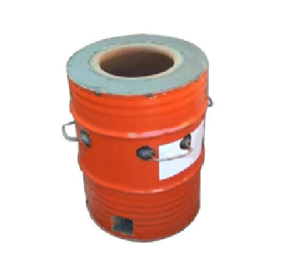TYPES OF TANDOOR
Square Tandoor

A square oven is utilized for the most part in eateries. This sort of oven is produced using treated steel that is in a case shape. Inside the tempered steel is an earth pot that is secured with warm protection that holds its warmth. A square oven as a rule requires gas or here and there charcoal.
Gas Tandoor

This oven is like a square oven. A gas oven is powered by propane or petroleum gas. This oven has burners fitted into it and an astound plate that is on the burners, this is utilized to redirect the fire and to enable warmth to up the earth pot inside the oven.
Dirt Tandoor Oven

Nothing beats the customary earth stove “oven”, this pot is set up by utilizing Indian mud. Some extraordinary added substances are added to the blend, this gives greater toughness and quality to the oven. A few ovens consume so hot that temperature came to up to 1000 degrees.
Drum Tandoor

A drum oven has an earth pot fitted with a steel barrel that fortifies the stove, it is wrapped with warm protection so it consumes extremely hot. A little opening is added to expel the cinders. This sort of oven is best to bake open air and providing food administrations.
Afghan tandoor

The Afghan tandoor sits above the ground and is made of bricks.
Punjab Tandoor

The Punjab Tandoor from South Asia is traditionally made of clay and is a bell-shaped oven, which can either be set into the earth and fired with wood or charcoal reaching temperatures of about 480 °C (900 °F; 750 K), or rest above the ground. Tandoor cooking is a traditional aspect of Punjabi Cuisine in undivided Punjab.
In India and Pakistan, tandoori cooking was traditionally associated with the Punjab as Punjabis embraced the tandoor on a regional level, and became popular in the mainstream after the 1947 partition when Punjabi Sikhs and Hindus resettled in places such as Delhi. In rural Punjab, it was common to have communal tandoors. Some villages still have a communal tandoor, which was a common sight prior to 1947.
Armenian tandoor

In ancient times, the tandoor was worshiped by the Armenians as a symbol of the sun in the ground. Armenians made tandoors in resemblance with the setting sun “going into the ground” (the Sun being the main deity). The underground tandoor, made of clay, is one of the first tools in Armenian cuisine, as an oven and as a thermal treatment tool. Armenians are said to have originated underground tandoor.
Azerbaijani tandoor

In ancient times, people used it to cook bread and various dishes. Tandoor bread (tandoori bread) is widespread bread type in Azerbaijan. Tandoor bread is baked from the heat of the tandoor’s walls, which ensures very fast baking.
One of the world’s biggest tandoors was built in Azerbaijan’s southern city of Astara in 2015. The height of the tandoor is 6.5 m (21 feet) and the diameter is 12 m (39 feet). The tandoor consists of 3 parts.
Turkmen tandoor

Baking a traditional, white bread called corek in Turkmen, is an ancient and honored culinary ritual in Turkmenistan. It is made in the traditional clay oven, known as tandoor in Turkmenistan.
Most Turkmen families living in the rural area have tandoors in their household. Occasionally, housewives get together and bake corek for several families. One of most famous kinds of corek baked in the Turkmen tandoor is etli corek (bread with meat), made during traditional holidays. Turkmens bake not only bread in the tandoor, but also several dishes, the most famous of which is somsa (an independent dish, similar to a pie, of any shape with a filling, usually beef). Various spices can be added to the Turkmen read like cumin, cinnamon, olives, mustard, sunflower seeds and other flavoring ingredients. To prepare tandoor for baking, first, fire is made directly inside the tandoor, usually using dried cotton stalks. The bread-maker then watches the color of the tandoor’s inner walls. When they turn shoveled into the center of the tandoor and the lower ash-pit is closed. The bread must be thrown into the oven very carefully, but deftly, so that it does not lose its shape and neatly stick to the wall.
